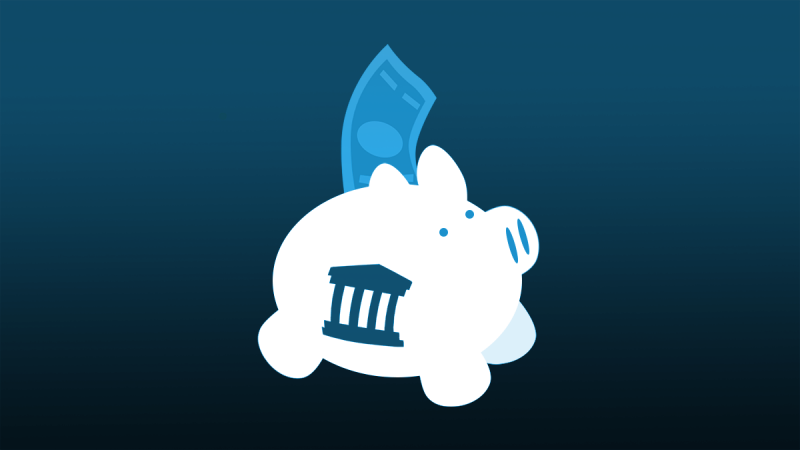Updates on Paycheck Protection Program Loan Forgiveness

In August, the Small Business Administration (SBA) released new guidance on loan forgiveness in the Paycheck Protection Program (PPP). The guidance confirmed some program rules, provided clarity to other rules, and addressed ongoing questions regarding loan repayment. This post will discuss the loan forgiveness process and address some important updates and key information that employers who utilized PPP funding should keep in mind as they seek loan forgiveness.
Loan Forgiveness Process
At this point in the PPP process, many borrowers have used their PPP money and are now eligible to apply for loan forgiveness. Borrowing organizations should complete an SBA form or lender provided application to start the process. The lender will have 60 days to review the application, and once approved, it will submit the application to the SBA. The SBA has 90 days to review the application. The SBA may ask for additional documentation to verify compliance with loan forgiveness.
Important Clarifications and Updates
In its official loan forgiveness guidance issued in August, the SBA answered 11 pages’ worth of frequently asked questions. Five important updates from that guidance are referenced below.
First, the SBA guidance provided clarity on what taking a loan in “good faith” meant. If employers took less than $2 million, they are given a “safe harbor,” and they are considered to have met the good faith standard. Organizations that took loans larger than $2 million will have to provide documentation showing why they needed the PPP loan.
Second, the guidance clarifies that borrowers will not have to make payments while waiting for their loan forgiveness decisions. If borrowers submit their loan forgiveness application within ten months of the covered period and the loan is wholly forgiven, no payments will be required. However, if only some of the loan is forgiven, the borrower will be responsible for payment of the loan portion due and for the accrued interest from the time of disbursement of the loan.
Third, the SBA clarified what expenses could be accounted for as employee compensation. Cash payments to the employee should be calculated before tax deductions or benefits to be eligible for forgiveness. Tips, commissions, hazard pay, and bonuses are also forgivable, but employers should keep in mind that forgivable cash compensation is limited to $100,000 per employee on an annualized basis. Health care benefits paid by the employer are considered payroll costs and are eligible for forgiveness. Employer contributions to employee retirement benefits are also considered eligible for forgiveness; however, payment deducted from payroll or paid by the employee is not forgivable.
Fourth, the guidance confirmed that borrowers will not be required to reduce their forgiveness amount if they offered to rehire laid-off employees and the employees declined the offer of employment. The SBA said it is possible to exclude those employees without effecting the full-time employee equivalent calculation. The employer must document in good faith that 1) it was unable to rehire former employees, and 2) it could not rehire a similarly qualified individual on or before December 31, 2020. Also, borrowers must report to state unemployment offices within 30 days if an employee rejects an offer of employment. The employer must have the rejected employment offer in writing. The employer must also have a written record of the refused employment offer and a written record demonstrating the employer’s efforts to hire another individual.
Fifth, the SBA confirmed that nonpayroll expenses incurred before the covered period, but due during the covered period, were forgivable expenses. For example, eligible mortgage costs, rent or lease costs, and even utility costs incurred before the covered period and paid during the covered period are eligible for loan forgiveness. Similarly, nonpayroll costs incurred during the covered period and paid on or before the next billing date, but after the covered period ended, are also eligible for loan forgiveness.
Conclusion
The SBA’s guidance on PPP loan forgiveness is an important resource for borrowers to consult as they prepare their forgiveness applications. The complete guidance document issued by the SBA can be found here. In addition to tracking any additional guidance issued by the SBA, borrowers should keep a mindful eye on Congress in the coming months to see if there is any legislative action that would overrule regulatory guidance. For example, some legislators have suggested making loan forgiveness as easy as signing an affidavit for those who borrowed under $150,000. As always, if your organization has questions about legal compliance with federal regulatory rules, be sure to seek experienced legal counsel to address your concerns.
_________________________________________
Featured Image by Rebecca Sidebotham.
Because of the generality of the information on this site, it may not apply to a given place, time, or set of facts. It is not intended to be legal advice, and should not be acted upon without specific legal advice based on particular situations
